THE BYRDS - MR TAMBOURINE MAN UK 1ST PRESSING 1A-1/1B-1 12" Vinyl LP Album
Rare UK 1st Pressing
Orange CBS Label, Walking Eye Logo over the spindle hole
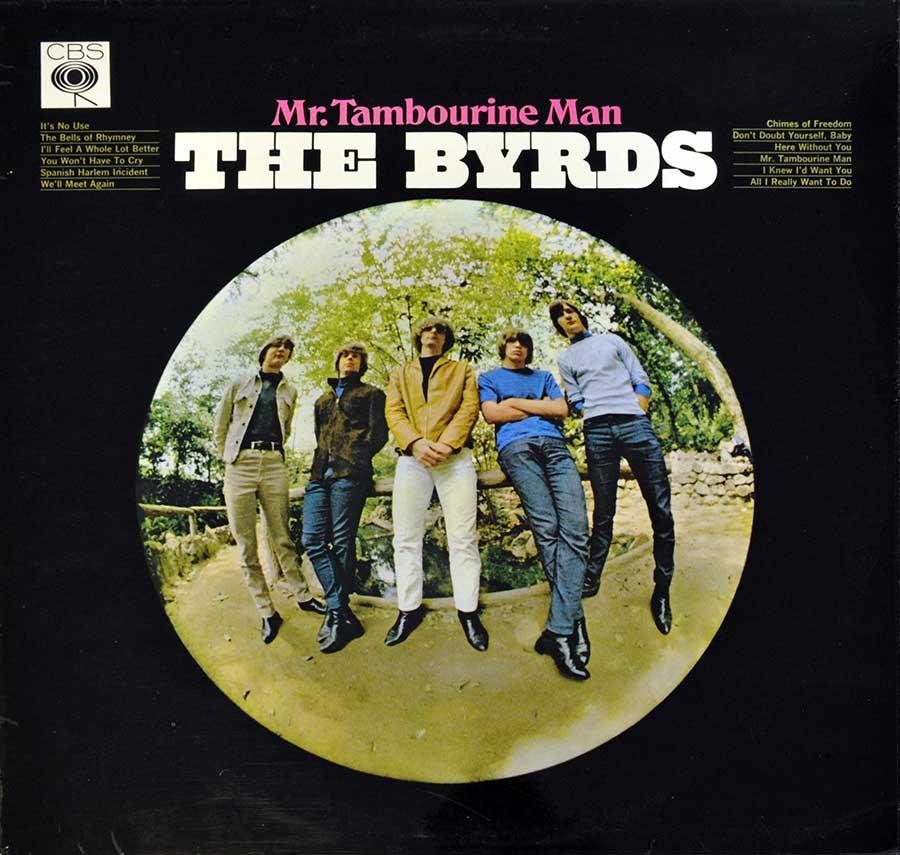
Rare UK 1st Pressing
Orange CBS Label, Walking Eye Logo over the spindle hole

THE BYRDS - MR TAMBOURINE MAN UK 1ST PRESSING 1A-1/1B-1 |
|
Album Description & Collectors Information: "The Byrds" were an American rock band formed in Los Angeles in 1964. Their debut album, "Mr Tambourine Man," released in 1965, was a commercial and critical success, and the title track became an international hit. The album is regarded as a classic and is often cited as one of the most influential records of the 1960s. The album's opening track, "Mr Tambourine Man," is a Bob Dylan cover that the band made their own. The song features the band's signature vocal harmonies, jangly guitars, and the distinctive 12-string Rickenbacker guitar played by lead guitarist Roger McGuinn. The song's success helped establish the band's place in the music scene and paved the way for their future success. The album also includes other popular tracks, such as "All I Really Want to Do," which was also written by Dylan and covered by The Byrds. The song features a catchy melody and showcases the band's ability to combine folk and rock elements. One of the album's standout tracks is "I'll Feel a Whole Lot Better," a song written by Gene Clark, the band's rhythm guitarist and primary songwriter at the time. The song features a driving beat, catchy melody, and a memorable guitar solo, making it one of the album's most upbeat and energetic tracks. Another memorable track is "The Bells of Rhymney," which features lyrics based on a poem by Welsh poet Idris Davies and again highlights the band's ability to blend folk and rock elements. The album's closing track, "We'll Meet Again," is an original song written by McGuinn and Clark. The song features a haunting melody and poignant lyrics that make it a fitting end to the album. The track showcases the band's ability to create music that was both melodic and emotionally resonant.
Rare UK 1st Pressing "Made in England" printed at 6'0 Clock
Matrix/Stamper codes:
Album cover details:
Inner Sleeve |
|
Music Genre: 60s American Rock Pop |
|
Album Production Information: The album: "Mr Tambourine Man" was produced by: Terry Melcher Photography: Barry Feinstein |
|
Record Label & Catalognr: CBS SBPG 62571 |
|
Media Format: 12" Vinyl Stereo Full-Length Long-Play Gramophone RecordA160 grams vinyl record Album weight: 230 gram |
|
Year & Country: 1965 Made in England |
|
Transcript of the liner notes on the "Mr Tambourine Man" album by The Byrds Open Letter to a Friend: Hey—have you heard The Byrds? Bob Dylan's Mr. Tambourine Man was their first C B S single record, and it was a hit! (The way I got the story was that Dylan heard The Byrds' version, flipped and said nobody could do it as well, and they should record it.) The Byrds are five guys who've been together for about eight months, but collectively have had years of experience. The leader of the group is Jim McGuinn, who toured for two years with The Chad Mitchell Trio and for a year with Bobby Darin when he had a folk act. McGuinn's done a bunch of other things. including writing and playing most of the arrangements for folk artists like Judy Collins. David Crosby who calls himself the "troublemaker" of the group because when he does this cute little smiling bit and crinkles his nose, the little girls flip—did the Macdougal Street thing for a while, and has been working as a solo singer-guitarist for five years. Gene Clark played with The New Christy Minstrels for a little over a year and writes a lot. In a way, he's the foundation of the group: unruffled, with a kind of Grant Woodish, Bonner Springs, Kansas, background. Chris Hillman, who used to play a lot of Bluegrass mandolin, now plays bass guitar with the group. (I'm told he plays John Coltrane solos on the mandolin—does that wake you up?) Mike Clark. the drummer, is, well, he's Mike Clark —happy, dedicated, whose gods are drummers Joe Morello and Elvin Jones. That's who they are, but what they are is special. Aside from singing Dylan's tunes better than anyone I've heard, they're taking the entire field in a new direction and it's a direction that the public has been "burstingly" ready for: playing the new American music in an exciting way. Leader McGuinn says: "What I'm doing now is a continuation of my love for music. Superficially, the form may have changed slightly, but the essence is the same. In other words, the har-monies—fourths, fifths—are the same, as well as the kinds of rhythms that are used and the chord changes. The instrumenta-tion is changing somewhat to meet the nuclear expansion and jet age. I used to like folk music, just straight folk music without electric guitar, drums and bass. I think that although the folk instruments are changing, it's still folk music. Actually, you can call it whatever you like." Of the English rock-and-roll groups he says: "They're a new package, a new presentation of music in which music finds a new form. Life is the same thing; it's just going through different manifestations—and music is life. We sent something over there and they're echoing it back to us with a slightly different flavor because they're different people. And now we can take what they gave us and echo it back to them with something else, another flavor added. There's an international music coming out; it's kind of like halvah, you know, it has all these ingredients: it has Latin and blues and jazz flavors, Anglo-Saxon church music, Negro church music. It has a lot of different forms." Of changing musical tastes Jim sayS: "I think the difference is in the mechanical sounds of our time. Like the sound of the air-plane in the Forties was a rrrrrrrr00000aaaaaaaahhhhhhhhhh sound and Sinatra and other people sang like that with those sort of overtones. Now we've got the krrrriiiiisssssssshhhhhhhh jet sound, and the kids are singing up in there now. It's the mechanical sounds of the era: the sounds are different and so the music is different. I trust everything will turn out all right." I asked a couple of fans why they dug The Byrds. Here's one answer: "They're bubbly and high and fast. They're rakish and raffish; there's a certain amount of irony in what they do; they're orange and green and yellow and near." Got that? Here's another one: "They play things no other group does. The music should have a strong beat, and the stronger the beat the stronger the emo-tions that can come out. Well, The Byrds play with a lot of emo-tion, but they do one more thing: they put true meaning across." Their first nightclub appearance drew a rave review from "Daily Variety" which contained such Variety-ese as "Biz should perk once word is out, The Byrds, in for a week, are in full flight" and "At last—a rock 'n' roll group that's considerate of the listener as well as the gyrating, beat-happy terper." The Byrds are a lot of things, with people filling in all kinds of reasons why they're special. The super-hippies find in them a perfect opportunity to trip out, to forget they're super-hippies. The folk singers flip because The Byrds have found a way to get to the beauty, the poetry, the love that's in the best of what's called folk—and they've found a way to get it onto Top Forty radio. The rock-and-roll musicians—Major Lance, Little Richard, teen-types Sonny and Cher, and a few others—made it into Ciro's in Hollywood when The Byrds were there, and they dug that some-thing new was happening. And Jackie De Shannon dug the way they did her tunes; Mary Travers was beautiful dancing to Mr. Tambourine Man. Judy Henske, Buffy Sainte-Marie, Barry Mc-Guire and a bunch of other New Christy Minstrels all became Byrd watchers. Then there were Lloyd Thaxton, Mitch Reid (and Mitch was one of four disc jockeys who unanimously picked the Mr. Tambourine Man single on KFWB in Los Angeles), a great-look-ing chick named Mary Hughes and, of course, the "in" crowd's method-actor comer, Michael Pollard. And L. A.'s pop art crowd, too, and a flippy guy named Bobby Dale at KEWB in San Fran-cisco, who was the first disc jockey in the country to play their single. Art Seidenbaum did a piece on them in the Los Angeles Times, devoting most of the column to great descriptive prose on the audience at Ciro's ("people who looked like they had just strag-gled out of Sherwood Forest"). His most significant line was: "But who can be sure what's happening?" There's a young writer in Los Angeles who is sure. His name is Paul Jay Robbins and he contributes occasionally to the Los Angeles Free Press, a "Village Voice"-ish weekly. He wrote: "What The Byrds signify ... is a concept deeply applied to uni-fication and empathy and a rich joy of life—together with a posi-tive recognition of the bulbous clusters of sickness around us. It represents a passing through negative apathy and an approach into involvement.... Dancing with The Byrds becomes a mystic loss of ego and tangibility; you become pure energy some place between sound and motion and the involvement is total." (Like the girl said, they're orange and green and yellow and near. Hmm.) Besides Mr. Tambourine Man, the other Dylan tunes they do are All I Really Want to Do, Chimes of Freedom and Spanish Harlem Incident. Lately, when they do Chimes in a club, McGuinn an-nounces: "We'd like to dedicate this next song to Donovan." We'll Meet Again they dedicate to Peter Sellers, Slim Pickens and Stanley Kubrick. The Bells of Rhymney is dedicated to Pete Seeger. Initially, you get a great shock hearing this song about a Welsh mine disaster being sung this way, as you watch a few dozen people doing the twistfrugwatusijerk and the endless, nameless variations. But soon you see how right it is as you see the words become the thoughts of people who would never have heard those words from any other source. Jackie De Shannon wrote Don't Doubt Yourself, Babe. Tunes in the album written by Gene Clark: I'll Feel a Whole Lot Better, Here Without You, I Knew I'd Want You, and in collaboration with Jim McGuinn: You Won't Have to Cry and It's No Use. There's a new thing happening, and it probably started with Bob Dylan. He gave the audience a new vocabulary, a new set of symbols to fit the feelings exploding in and around them. The Byrds take his words and put them in the framework of the beat, and make imperative the meaning of those words. And there's an unseen drive, a soaring motion to their sound that makes it compelling, almost hypnotic sometimes. And when you listen, hear through the sound to the joy that propels it. I hope you enjoy the record and, as Jim McGuinn says, I trust everything will turn out all right. Regards, The Byrds National Fan Club |
Band Members and Musicians on: The Byrds Mr Tambourine Man |
|
Complete Track Listing of: "Mr Tambourine Man" |
|
The Songs/tracks on "Mr Tambourine Man" are
|

---
Note: The images on this page are photos of the actual album. Slight differences in color may exist due to the use of the camera's flash. Images can be zoomed in/out ( eg pinch with your fingers on a tablet or smartphone )
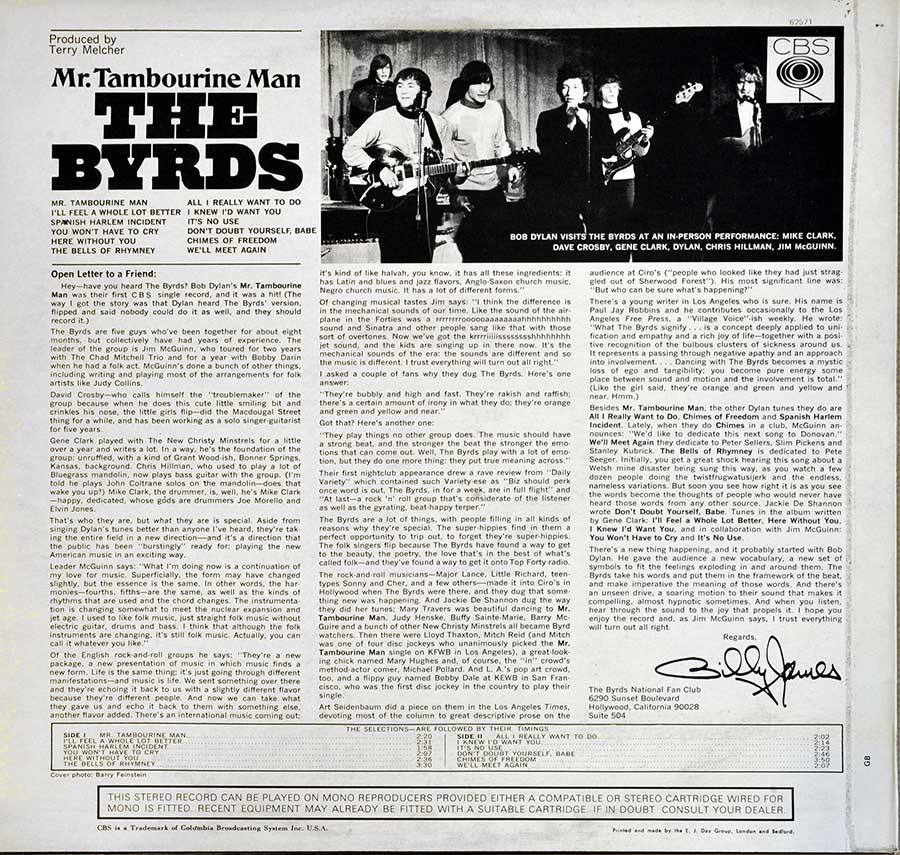
---
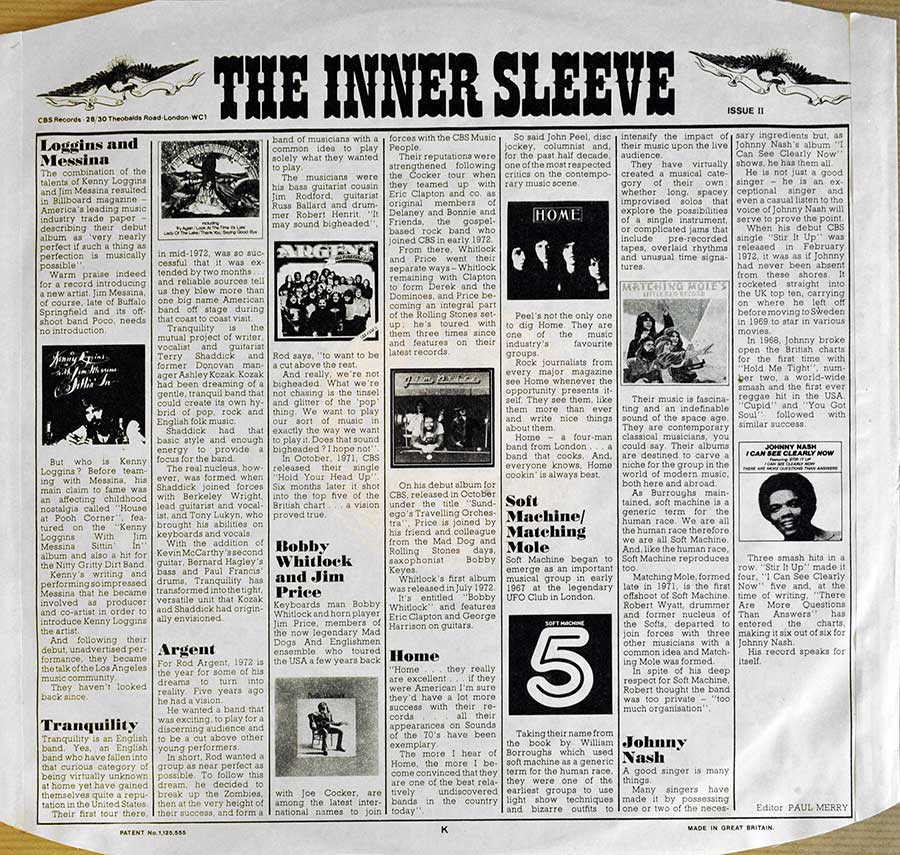
---
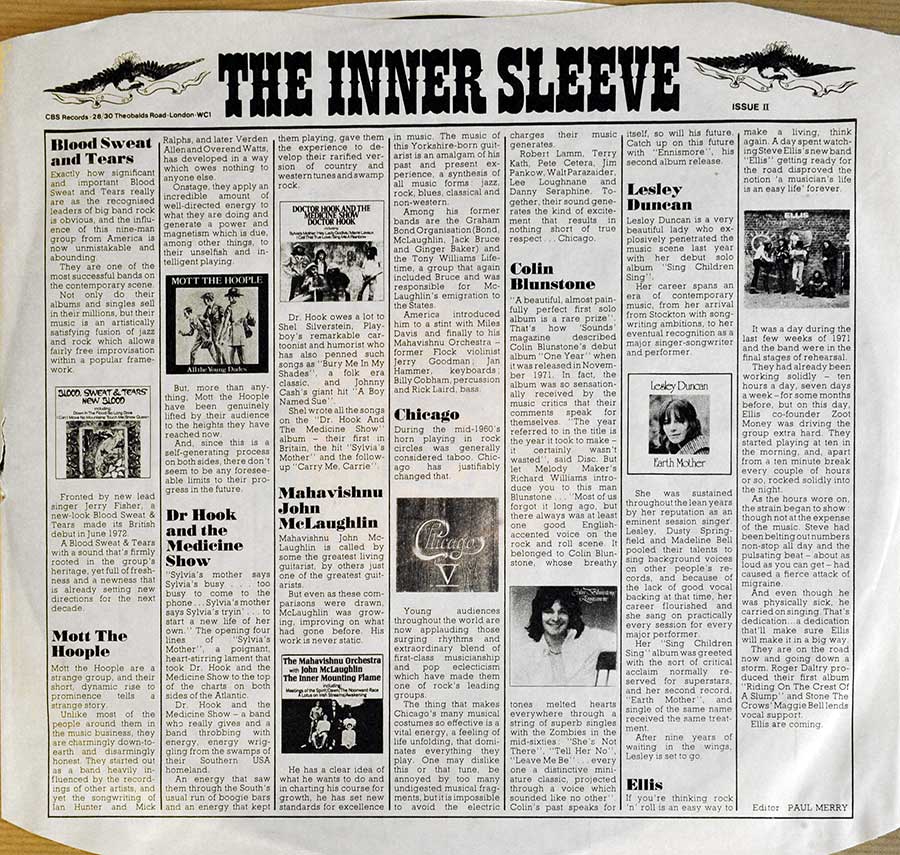
---
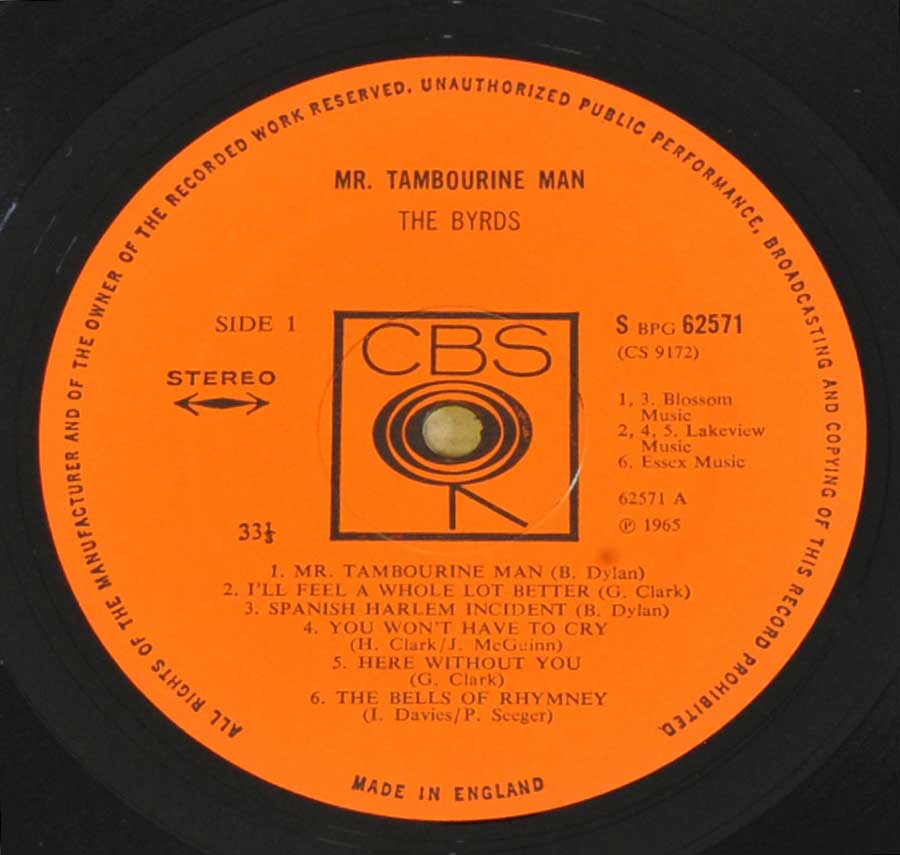
Record Label Details: Orange Colour with "Walking Eye" logo around spindle. CBS 62571 , Made in England ℗ 1963 Sound Copyright
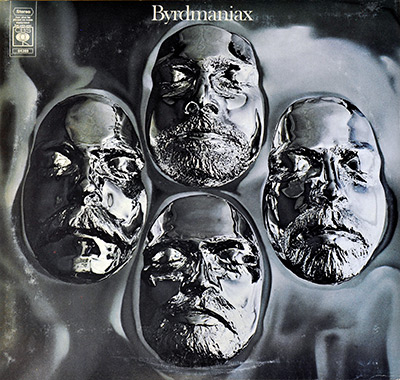
The album was recorded with a different lineup than the band's classic era, and it was largely dismissed by critics upon its release. However, "Byrdmaniax" still features some noteworthy tracks, including "I Wanna Grow Up to Be a Politician" and "Glory, Glory."
Learn more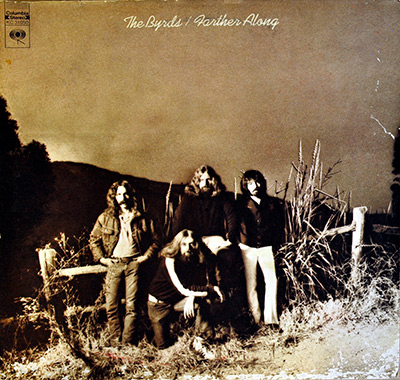
The core of "Farther Along" was recorded during an intense five-day session in London. The band, led by frontman Roger McGuinn with Chris Hillman, Skip Battin, and Gene Parsons, largely self-produced the album. The emphasis was on live, unadorned recordings that captured their raw energy.
Learn more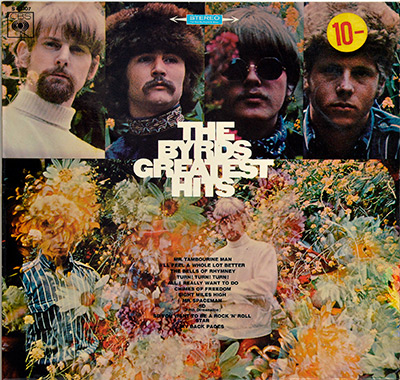
This is the first Dutch release of "Greatest Hits" by "The Byrds" and the record label has a solid Orange colour and the CBS "Walking Eye" Company Logo. Later issues of the Dutch release have an orange to yellow colour grading on the label.
Learn more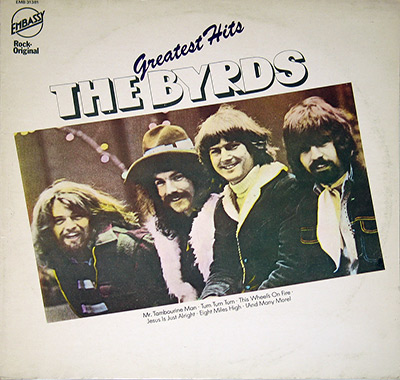
Embassy Records was a budget label famous for selling cover versions of popular hits exclusively through Woolworths stores. They offered cheaper alternatives to original singles, targeting young listeners with limited budgets. Embassy thrived in the 1950s and 60s, known for quick production and affordability
Learn more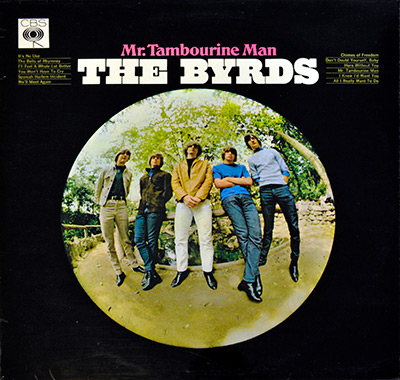
The album's opening track, "Mr Tambourine Man," is a Bob Dylan cover that the band made their own. The song features the band's signature vocal harmonies, jangly guitars, and the distinctive 12-string Rickenbacker guitar played by lead guitarist Roger McGuinn. The song's success helped establish the band
Learn more
The reunion album aimed to revisit the sound that made The Byrds famous nearly a decade earlier: jangly guitars, tight harmonies, and a folk-country foundation. While some songs echoed the band's earlier work, there was also a sense of seasoned musicianship and a willingness to take subtle risks.
Learn more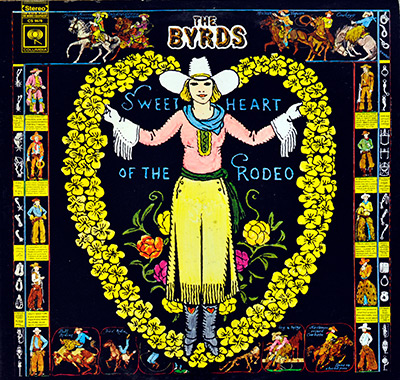
By the time The Byrds entered the studio to record "Sweetheart of the Rodeo," the band had weathered significant changes. Founding members David Crosby and Gene Clark had departed, leaving Roger McGuinn and Chris Hillman as the core members. New to the fold were Gram Parsons, a rising star with a passion
Learn more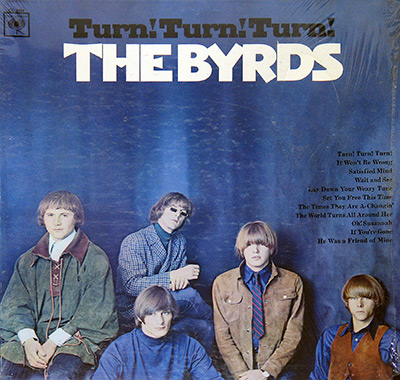
The Mono edition of the album is highly sought after by collectors and music enthusiasts. The Mono version of the album is different from the stereo version in that it has a more raw and authentic sound. The Mono edition has a single channel of audio, which gives it a more unified and coherent sound.
Learn more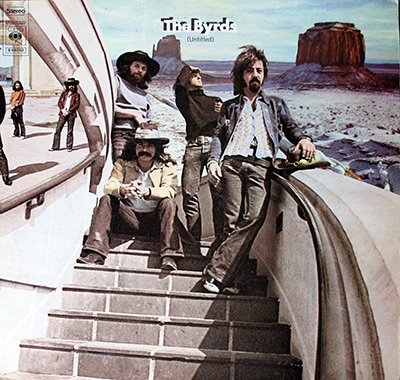
The Byrds' "Untitled" album was a double LP set that included both live recordings and studio tracks. The live recordings were taken from concerts that the band had performed at the Fillmore East in New York City and the Fillmore West in San Francisco. The studio tracks were recorded at Columbia Studios
Learn more